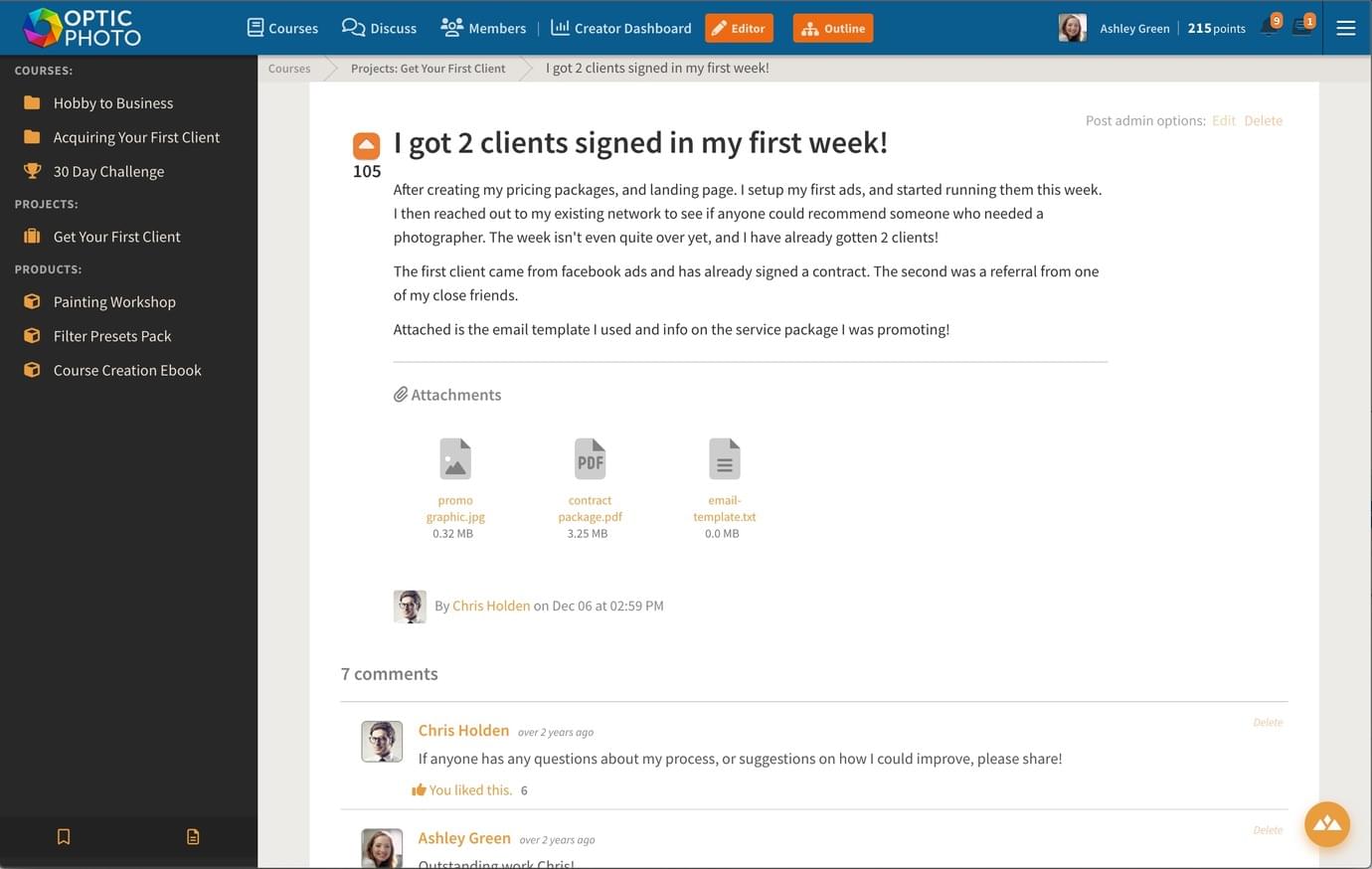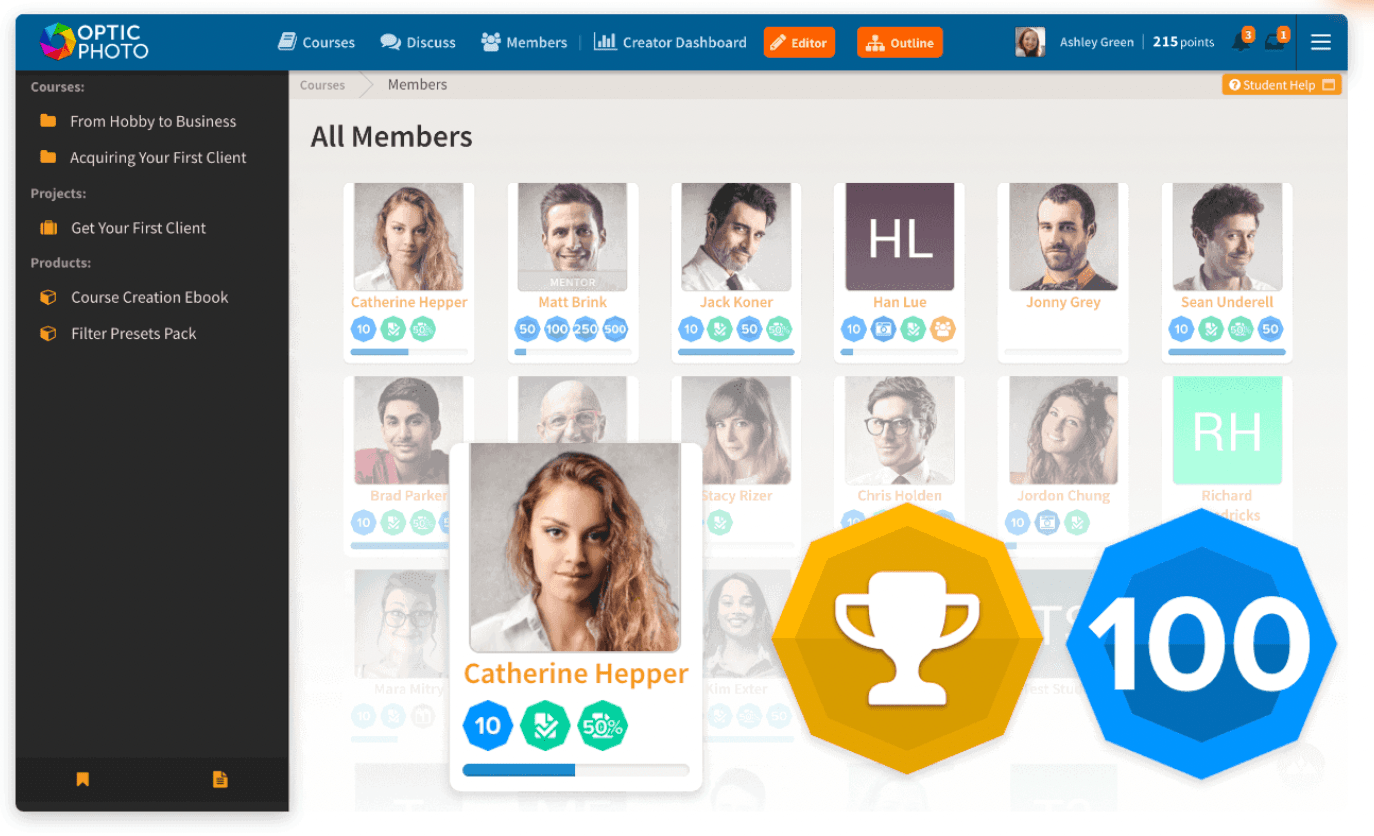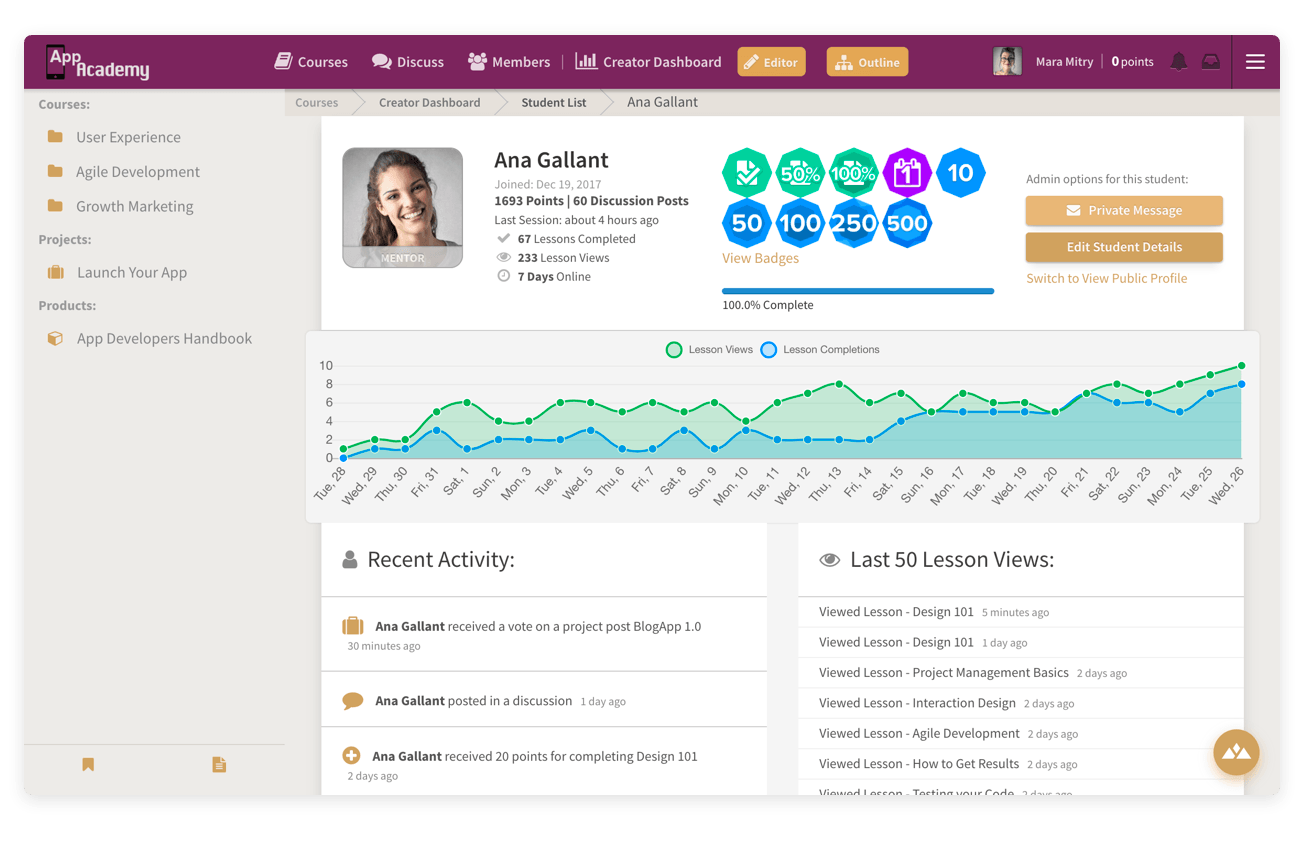How to Personalize an Online Course and Improve the Student Experience
6 minute readSelling online courses is a great way to share knowledge and start an online business.
A way to make your online course even more successful is to offer an awesome learning experience to students. This can be achieved with the help of personalization.
In today's article, we will talk about how to personalize an online course and what you can do to make your online course more engaging and interactive for students.
What is Online Course Personalization?
Personalization in online learning refers to the customization of online course content and learning experiences to meet the individual needs, preferences, and learning styles of each learner.
In personalized learning, the curriculum, activities, and assessments of a course are tailored to the student's individual strengths, weaknesses, interests, and goals.
Personalization aims to provide students with more relevant and engaging learning experiences, increase motivation and engagement, and help them reach their full potential. It can also benefit creators by allowing them to better track student progress and adjust their teaching strategies accordingly.
By default, online courses already include some personalization elements. The fact that courses are self-paced is an important personalization tactic that allows students to learn in their free time and adapt e-learning to their personal situations.
Depending on which online course platform you are using, you might already have access to other personalization tools.
Creators using Heights Platform get the most features to build engaging and personalized courses: gamification, multiple course structure options, a built-in learning community, assignments and detailed analytics about student progress.
Why Should You Personalize Your Online Course?
Adding personalization to online courses can help creators provide more effective and efficient teaching, leading to better outcomes for their students. Let's see why you should consider personalizing your course:
- Improved student engagement: When students feel that the course content and online resources are tailored to their individual needs and interests, they are more likely to be engaged and motivated to learn.
- Increased student retention: Personalization can help prevent students from dropping out of the course by making the students learning journey more enjoyable and relevant to their needs.
- Enhanced learning outcomes: Customizing the learning experience to individual student needs can help students learn more effectively and better achieve the learning outcome of your course.
- Better insights into student progress: Personalization can provide educators with valuable data and insights into their student progress, allowing them to make more informed decisions about online teaching strategies and improve their course structure and content.
6 Personalized Learning Strategies to Apply to Your Online Course
Personalized courses provide a flexible approach to online learning, improving the overall experience for students and helping them reach their learning objectives faster.
Here are some techniques that can you can apply to your own course to make it more personalized:
#1: Let Your Students Practice Their Skills
To create a more personalized learning experience, it's important to give students the opportunity to demonstrate their learning and make choices along the way. One effective approach is to let students showcase their understanding in a variety of ways that highlight their competency. For example, students can select their own project ideas and conduct research on a topic they find engaging.
When given the option to write an essay on a topic they enjoy, students are more likely to be motivated and achieve the desired learning outcomes. As long as the essay aligns with the lesson's primary objectives, allowing students to choose their own topic can help them become invested in the lesson from the outset.
The Projects feature on Heights Platform gives students a unique opportunity to demonstrate their practical application of the course material they have learned. By engaging in hands-on projects, students are given a chance to apply their knowledge in real-life scenarios, which can significantly enhance their learning experience.

Compared to traditional tests or quizzes, projects offer a more effective and immersive approach to learning, benefiting both students and creators. Including at least one project in a course is highly recommended, as it promotes a deeper understanding of the material and helps students develop critical thinking and problem-solving skills.
#2: Build an Online Community For Engagement
Building a learning community is an excellent way to encourage student participation throughout your course and facilitate peer-to-peer learning at their own pace.
By incorporating a community within your course, learners can benefit from social learning and experience increased engagement and motivation. The community provides a platform for students to share ideas, ask questions, and offer feedback to fellow learners.

Heights Platform's online community feature is directly integrated into the program, making it easily accessible for learners as they progress through the program. Creators can promote interaction, collaboration, personalization, and inclusivity to foster a sense of belonging and strengthen connections among learners.
Creators have the flexibility to structure the community in various ways, such as creating channels of communication for different topics, grouping them into channel groups, allowing different channels for different students, and moderating posts within the community.
#3: Add Gamification Tools
Students are more likely to participate in the course and community when they feel they are progressing and enjoying the course content.
Gamified learning incorporates game-like features into the educational process, increasing student participation in instructional activities.
Heights Platform provides course creators with various tools and features to create an interactive and engaging experience for their students.
Heights Platform's gamification includes elements such as points, badges, and completion certificates that motivate and encourage students to complete tasks and achieve learning objectives.

Assignments and projects are also available on the platform, allowing students to apply what they have learned in a practical manner, promoting a deeper understanding of the course material. Furthermore, the built-in community space fosters social learning, providing a platform for students to interact, ask questions, and provide feedback to one another.
By incorporating these gamification elements and tools into their online courses, creators can improve student engagement and motivation, ultimately leading to better learning outcomes. Additionally, these features can help course creators enhance their online business reputation by offering a more immersive and interactive experience for their students.
#4: Consider Offering Individual or Group Guidance
Videos are effective learning tools and can increase students' engagement in lessons. However, pre-recorded videos or webinars only allow for one-way communication without much student interaction.
Instead, you could complement your online course pre-recorded lesson with live webinars and one-on-one or group coaching calls to offer students a more enriching experience. During such events, students can engage with the creator and the content in a way that best suits them.
They can prepare their own questions to ask during Q&A sessions and have the opportunity to speak directly with the creator and other attendees.
Learn more about offering coaching services:
- What is One-on-One Coaching and How to Get Started
- 6 Coaching Products and Services You Can Offer With Your Online Coaching Business
#5: Track Analytics and Student Progress
By looking at analytics in your learning management system, creators can identify patterns in student behavior and engagement, such as the amount of time spent on specific lessons, completion rates, and the most commonly accessed course materials.
This information can help creators optimize their course content and improve overall learning outcomes.

Heights Platform provides detailed analytics to creators, enabling them to gain insights into students' performance and track their progress through the course. With access to this data, creators can understand which lessons or course materials students prefer and identify areas that need improvement.
#6: Personalize the Student Onboarding
If you want to go all into providing a highly personalized experience for your students, you can start from the onboarding.
Normally the process of when a new student signs up for a course is quite passive and doesn't require much intervention from the creator. While this is great because it means that you have successfully automated this process, it can be an opportunity for further personalization.
Chances are that students who enroll in your course have different backgrounds, different goals and require a different learning approach.
Here are a few examples of what you could do right at the onboarding to personalize the students' experience:
- Send a personalized email: an easy way to personalize the onboarding experience is to send a personalized welcome email to each new student. On Heights Platform, you can even automate this process to send different emails depending on which course or product your students purchase. In the welcome email, you could introduce your product and ask some personal questions to the students to assess their goals and recommend other online resources for them.
- Schedule a welcome call: an even more personal way to welcome a new student is to jump on an onboarding call with them. This strategy is especially appropriate for high-ticket programs where students expect this level of service. On the call, you can ask questions to the students to understand what they want to achieve and suggest a course of action depending on their goals.
- Offer a questionnaire: another easy way to gather information from new students without requiring much intervention is to set up a questionnaire as soon as students enroll in your course. Same as the other strategies, the questionnaire serves to collect information and understand the student's goals, and it allows you to get back to them with personalized recommendations.
- Welcome new students into the community: If you have set up an online community in your program, you can personalize a student's experience by personally welcoming them into the community space.
Conclusion
Personalizing an online course can have great benefits in enhancing the student experience, increasing completion rates and making your online program a success.
This article covered different ways for creators to make their courses more personalized to each individual student. Strategies such as creating a Project to let students practice their skills, community building, analyzing students' progress, adding gamification tools, offering individual or group coaching and personalizing the onboarding process can make a huge difference in your learning program.
Personalizing your course will be much easier if you use a learning platform that offers you awesome features for student engagement.
Start your free Heights Platform account today and see it for yourself!
Create Your Online Course Today


